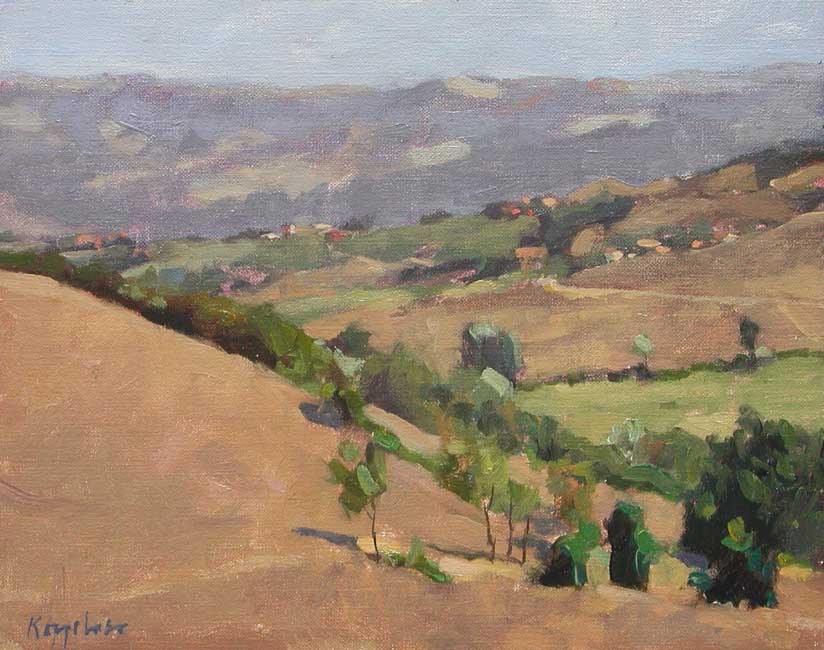aerial perspective on:
[Wikipedia]
[Google]
[Amazon]
Aerial perspective, or atmospheric perspective, refers to the effect the 


atmosphere
An atmosphere () is a layer of gas or layers of gases that envelop a planet, and is held in place by the gravity of the planetary body. A planet retains an atmosphere when the gravity is great and the temperature of the atmosphere is low. A s ...
has on the appearance of an object as viewed from a distance. As the distance between an object and a viewer increases, the contrast between the object and its background decreases, and the contrast of any markings or details within the object also decreases. The colours of the object also become less saturated and shift toward the background colour, which is usually bluish, but may be some other colour under certain conditions (for instance, reddish around sunrise or sunset
Sunset, also known as sundown, is the daily disappearance of the Sun below the horizon due to Earth's rotation. As viewed from everywhere on Earth (except the North and South poles), the equinox Sun sets due west at the moment of both the spring ...
).



History
Atmospheric perspective was used in Pompeian Second Style frescos, one of the Pompeian Styles, dating as early as 30 BCE. Notable examples include the Garden Room Fresco from the Villa of Livia in Prima Porta, Italy, and the first century Pompeian fresco ''Paris on Mount Ida''. With varying degrees of accuracy, explanations of the effects of atmospheric perspective were written by polymaths such as Leon Battista Alberti and Leonardo da Vinci. The latter used aerial perspective in many of his paintings such as '' The Annunciation'', the '' Mona Lisa'', and '' The Last Su